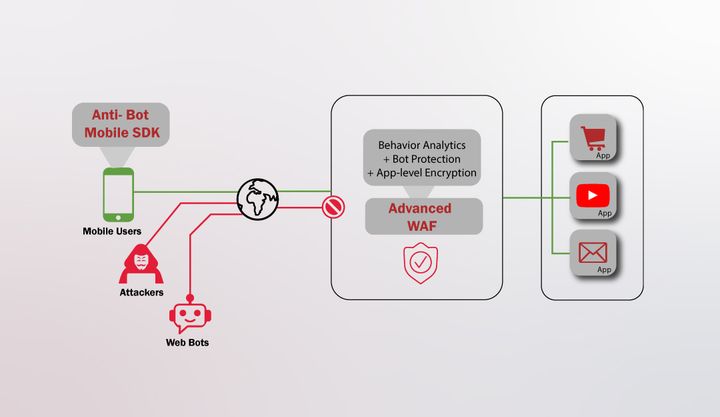Understand the Basics of Web Application Firewall (WAF)

A Web Application Firewall (WAF) is a security tool that monitors and controls incoming and outgoing traffic to and from a web application. It is designed to protect web applications from various types of attacks, such as cross-site scripting (XSS), SQL injection, and cookie poisoning.
A WAF operates by analyzing HTTP traffic to and from a web application and comparing it against a set of rules or security policies. If the traffic violates one of these policies, the WAF can take a variety of actions, such as blocking the traffic, allowing the traffic but modifying it to remove the malicious content, or sending an alert to the administrator.
WAFs are an important tool for protecting web applications from various types of attacks, but they are not a replacement for other security measures, such as input validation and proper configuration of the web application and the server it is running on.
There are two main types of Web Application Firewalls (WAFs): network-based WAFs and host-based WAFs.
Network-based WAFs: These are typically deployed as a separate device in front of the web application, usually as part of a larger network security infrastructure. They operate by inspecting traffic as it passes through the device and comparing it against a set of security rules. If the traffic violates one of these rules, the WAF can take a variety of actions, such as blocking the traffic, allowing the traffic but modifying it to remove the malicious content, or sending an alert to the administrator.
Host-based WAFs: These are installed directly on the server hosting the web application. They operate by intercepting traffic before it reaches the web application and comparing it against a set of security rules. If the traffic violates one of these rules, the WAF can take a variety of actions, such as blocking the traffic, allowing the traffic but modifying it to remove the malicious content, or sending an alert to the administrator. Host-based WAFs are typically used in conjunction with network-based WAFs to provide an additional layer of protection for the web application.
In addition to these two main types of WAFs, there are also hybrid WAFs that combine elements of both network-based and host-based WAFs. Hybrid WAFs may be deployed as a separate device in front of the web application or installed directly on the server hosting the web application. They are typically more flexible and customizable than either network-based or host-based WAFs, but they may also be more complex to set up and manage.
Web Application Firewalls (WAFs) have a variety of features that are designed to protect web applications from various types of attacks and threats. Some common features of WAFs include: Rule-based protection, Encryption, Authentication, Data validation, Traffic management, Alerting and reporting and many more.
Why Web Application Firewall (WAF) is important for an Organization
Web Application Firewalls (WAFs) are important for organizations because they provide an additional layer of security for web applications. Web applications are often targeted by attackers because they can be accessed from anywhere with an internet connection and often contain sensitive data, such as financial information or personal identification.
A WAF can protect a web application from various types of attacks, such as cross-site scripting (XSS), SQL injection, and cookie poisoning. These attacks can compromise the security of the web application and the data it handles, leading to data breaches, loss of customer trust, and damage to the organization's reputation.
In addition to protecting against attacks, a WAF can also help organizations meet compliance requirements by enforcing security policies and providing a record of security events. This can be especially important for organizations in regulated industries, such as healthcare and finance, that are required to adhere to strict security standards.
Overall, a WAF is an important tool for protecting web applications and the data they handle, and can help organizations reduce the risk of security breaches and maintain customer trust.




Comments ()